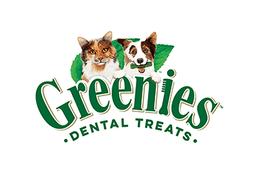Japanese Chin

The Japanese Chin is a small, elegant companion dog known for its distinct appearance and charming personality. With its large, dark eyes, fluffy coat, and gracefully arched tail, this breed was once favoured by Japanese nobility. Bred specifically as a companion dog, the Japanese Chin is affectionate, devoted, and enjoys being the centre of attention. Despite its royal origins, this breed is adaptable and makes a delightful pet for many households.
Japanese Chin Dog Breed Facts & Characteristics
| Dog Breed Facts & Characteristics | Details |
|---|---|
| Origin | Japan (with possible roots in China) |
| Also known as | Chin, Japanese Spaniel |
| Bred for | Companionship |
| Size | Toy; 20 to 27 cm in height |
| Weight range | 2.5 to 5 kg |
| Colours | White with coloured patches (black, red, or lemon) |
| Life expectancy | 12 to 14 years |
| Coat | Long, silky hair |
| Temperament | Pleasant, affectionate, devoted, happy |
| Exercise requirements | Low; a daily walk is sufficient |
| Best suited for | Families, singles, apartment dwellers |
| Apartment friendly | Yes, very well-suited to apartment living |
Personality
Renowned for their elegance and sweet disposition, Japanese Chins are intelligent and independent dogs with a playful side that endears them to their owners. Although they enjoy being the centre of attention, Japanese Chins are generally quiet and polite, making them excellent pets for those who appreciate a calm environment. Their devotion to their family is evident, and they are known to form strong bonds with their owners. While they are friendly with other pets, they can be reserved around strangers, but this adds to their appeal as gentle watchdogs.
Grooming
The Japanese Chin’s long, silky coat requires regular maintenance to keep it in top condition. Light combing or brushing every day is recommended to prevent tangling and matting, particularly around the ears, legs, and tail. Using a slicker brush can help remove loose hair more effectively. Although they are average shedders, consistent grooming helps minimise loose hair around the home. Regular cleaning of their eyes and facial folds is essential to prevent irritation or infection, given their prominent eyes. A monthly bath using a mild, dog-friendly shampoo will help keep their coat clean and shiny, but be sure to dry them thoroughly to avoid any skin issues.
Feeding
Feeding a Japanese Chin requires careful attention to their specific dietary needs due to their small size and potential risk for hypoglycemia. To maintain stable blood sugar levels and prevent hypoglycemia, it's recommended to feed them small, frequent meals—typically three times a day.
For puppies, a small-breed, high-quality puppy formula is essential to support their growth and development. As they reach adulthood, typically around 1 year of age, their diet should gradually transition to a small-breed adult dog food to meet their nutritional needs without contributing to excess weight gain.
Portion control is crucial to prevent obesity, a common issue in small breeds. Regular vet check-ups are recommended to adjust their diet as they age and to determine when a senior dog food might be appropriate. Always ensure your Japanese Chin has access to fresh, clean water, and avoid overfeeding treats to keep them healthy and at an ideal weight.
Common Health Concerns
Like many small breeds, the Japanese Chin can be susceptible to certain health problems. Their prominent eyes make them vulnerable to conditions like cataracts and progressive retinal atrophy (PRA). Additionally, luxating patellas are fairly common, where the kneecap can slip out of place, potentially causing arthritis over time. As a breed with a flat face (brachycephalic), they may encounter breathing issues, particularly in warm or humid climates, which can cause snoring or wheezing. Degenerative mitral valve disease, a heart condition that affects the valve's ability to function properly, is another concern, particularly in older dogs. Given their sensitivity to heat, it's crucial to keep them cool in hot weather and avoid overexertion. Regular veterinary visits and early intervention with any health issues are key to ensuring your Japanese Chin remains healthy and happy.
Did You Know?
Unlike other Japanese breeds that carry the suffix "Inu," meaning "dog," the Japanese Chin's name reflects its royal heritage— "Chin" translates to "esteemed" or "royalty." This distinction highlights the breed's historical role as a cherished companion of Japanese nobility. While some believe the breed may have originated in China, it was in Japan that the Chin was refined and revered as a symbol of prestige and grace.
FAQs
How much does a Japanese Chin cost in Australia?
The cost of a Japanese Chin in Australia can range from AUD $2,500 to $5,000, depending on factors such as the breeder, lineage, and whether the dog is of show quality.
Are Japanese Chins good with children?
Yes, Japanese Chins can be good with children, especially when they are raised together. However, due to their small size and delicate build, they are better suited to households with older children who can handle them gently.
Why do Japanese Chins often sneeze or snort?
Japanese Chins are prone to a condition known as reverse sneezing, which occurs when they get excited, drink water too quickly, or are exposed to irritants like dust. This is usually harmless and stops on its own, but if it becomes frequent, a vet should be consulted.
How do I manage the tear staining common in Japanese Chins?
Tear staining is common in Japanese Chins due to their large, protruding eyes. To manage this, regularly clean the area around their eyes with a damp cloth or pet-safe wipes. Ensuring that their eyes are kept free of irritants and that their diet is balanced can also help reduce staining.
Do Japanese Chins shed a lot?
Japanese Chins are average shedders. Regular grooming, including daily brushing, can help manage shedding and keep their coat in good condition.




























